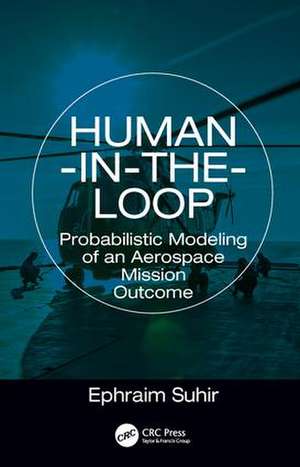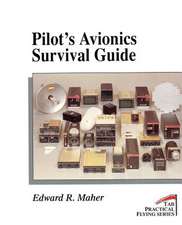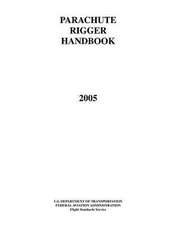Human-in-the-Loop: Probabilistic Modeling of an Aerospace Mission Outcome
Autor Ephraim Suhiren Limba Engleză Hardback – 5 apr 2018
- Covers the concepts, which are adaptable across other disciplines, and methodology for evaluating the likelihood of a successful outcome of an extraordinary situation
- Considers human performance and equipment/instrumentation reliability, as well as other possible sources of uncertainty
- Presents probabilistic assessment of an aerospace mission outcome
- Provides the most effective, physically meaningful, and cost-effective planning of an aerospace mission
- Offers how to organize and provide the most effective training of personnel
| Toate formatele și edițiile | Preț | Express |
|---|---|---|
| Paperback (1) | 426.78 lei 43-57 zile | |
| CRC Press – 31 mar 2021 | 426.78 lei 43-57 zile | |
| Hardback (1) | 1089.01 lei 43-57 zile | |
| CRC Press – 5 apr 2018 | 1089.01 lei 43-57 zile |
Preț: 1089.01 lei
Preț vechi: 1328.06 lei
-18% Nou
Puncte Express: 1634
Preț estimativ în valută:
208.41€ • 216.49$ • 173.12£
208.41€ • 216.49$ • 173.12£
Carte tipărită la comandă
Livrare economică 03-17 februarie 25
Preluare comenzi: 021 569.72.76
Specificații
ISBN-13: 9780815354550
ISBN-10: 081535455X
Pagini: 237
Ilustrații: 30 Illustrations, black and white
Dimensiuni: 156 x 234 x 13 mm
Greutate: 0.52 kg
Ediția:1
Editura: CRC Press
Colecția CRC Press
ISBN-10: 081535455X
Pagini: 237
Ilustrații: 30 Illustrations, black and white
Dimensiuni: 156 x 234 x 13 mm
Greutate: 0.52 kg
Ediția:1
Editura: CRC Press
Colecția CRC Press
Public țintă
Professional Practice & DevelopmentCuprins
1. Introduction: Probabilistic Modeling Approach in Aerospace Engineering 2. Fundamentals of Applied Probability 3. Helicopter-Landing-Ship and the Role of the Human Factor 4. Fundamentals of Probabilistic Aerospace Electronics Reliability Engineering 5. Probabilistic Assessment of an Aerospace Mission Outcome 6. The "Miracle-on-the-Hudson" Event: Quantitative Aftermath 7. "Two Men in a Cockpit": Likelihood of a Casualty If One of the Pilots Gets Incapacitated 8. Probabilistic Modeling of the Concept of Anticipation in Aviation 9. Double-Exponential Probability Distribution Function for the Human Nonfailure
Notă biografică
Dr. E. Suhir is on the faculty of the Portland State University, Portland, OR, USA, and Vienna Institute of Technology, Vienna, Austria. He is Life Fellow of the Institute of Electrical and Electronics Engineers (IEEE), the American Society of Mechanical Engineers (ASME), the Society of Optical Engineers (SPIE), and the International Microelectronics Packaging Society (IMAPS); Fellow the Institute of Physics, UK; and the Society of Plastics Engineers (SPE). Ephraim holds 22 US patents and has authored and co-authored above 400 technical publications (papers, book chapters, books, and peer-reviewed conference proceedings), presented numerous keynote and invited talks worldwide, and received many professional awards. Also by Ephraim Suhir
Structural Analysis in Microelectronic and Fiber Optic Systems: Basic Principles of Engineering Elasticity and Fundamentals of Structural Analysis, Van Nostrand Reinhold, New York, 1991
Applied Probability for Engineers and Scientists, McGraw Hill, New York, 1997.
Dynamic Response of Microelectronic Systems to Shocks and Vibrations, John Wiley, New York, 2011 (co-edited with D. Steinberg, and T. Yi)
Reliability of Photonic Materials and Structures, MRS Symposia Proceedings, vol. 531, 1998 (co-edited with M. Fukuda and C. R. Kurkjian) .
Micro- and Opto-Electronic Materials and Structures: Physics, Mechanics, Design, Packaging, Reliability, 2 volumes, Springer, 2008 (co-edited with CP Wong and YC Lee)
Structural Analysis in Microelectronic and Fiber Optic Systems: Basic Principles of Engineering Elasticity and Fundamentals of Structural Analysis, Van Nostrand Reinhold, New York, 1991
Applied Probability for Engineers and Scientists, McGraw Hill, New York, 1997.
Dynamic Response of Microelectronic Systems to Shocks and Vibrations, John Wiley, New York, 2011 (co-edited with D. Steinberg, and T. Yi)
Reliability of Photonic Materials and Structures, MRS Symposia Proceedings, vol. 531, 1998 (co-edited with M. Fukuda and C. R. Kurkjian) .
Micro- and Opto-Electronic Materials and Structures: Physics, Mechanics, Design, Packaging, Reliability, 2 volumes, Springer, 2008 (co-edited with CP Wong and YC Lee)
Recenzii
"Reliability and safety have risen to the forefront of aerospace and avionic industry. Dr Suhir, a prolific author and a leading expert in probabilistic predictive modeling, has addressed the important aspects of the subject through adaptive probabilistic predictive modeling in human-in-the-loop situations approach. The book is a significant contribution to this field."
—Jennie S. Hwang, Ph.D., D.Sc., CEO, H-Technologies Group, New York, USA
"The author possesses extensive experience in probabilistic modeling of complex system. This book provides fundamental understanding and numerous real-life examples for human-system interactions in safety engineering for aerospace. This is one-of-a-kind book in this area, and gives readers an edge in human-in-the-loop probabilistic modeling of aerospace missions and extraordinary situations. In my judgement, application of methods and approaches suggested in this book will make a significant difference in the state-of-the-art in the field of aerospace ergonomics"
—Xuejun Fan, Professor, Department of Mechanical Engineering, Lamar University, USA
"This book comprises much more knowledge and experience than what could be expected purely from the title. It compiles the major outcomes of scientific work of the author throughout decades and is based on his publications in high-ranked technical journals. One the one hand, the book provides a thorough introduction into the fundamentals of statistics. On the other, the author projects his thoughts on real-life situations with clearly described roles and functions of human in distinct situations and demonstrates in an impressing and unique way how to put these functions (or malfunction) into numbers. Therefore, the value of this book is manifold.
In addition, the style of the text and the accurate and complete explanation of the used notation allows to follow even demanding mathematical derivations and to rate this book as one that satisfies readers even with highest scientific expectations. In this way, this book can also be warmly recommended as lecture book for academic education."
—Johann Nicolics, Institute of Sensor and Actuator Systems, ISAS, Austria
"Increasing system complexity across all disciplines has resulted in a number of increasingly formidable challenges, especially in the areas of failure analyses, and particularly those of the Human-in-the-Loop type. Dr. Suhir's book is an important step in making such analyses practical and physically meaningful, and since, as the author has indicated, nobody and nothing is perfect, such analyses should be preferably done on the probabilistic basis. Probabilistic modeling is an important and a pioneering step in the direction of being able to manage the increasing phenomenological aspects of the human-machine/equipment interaction. Although Dr. Suhir's book is focused on the aerospace field, the content of the book can be easily extended to other vehicular engineering fields, such as, for instance, as automotive or maritime. The methods and approaches addressed and discussed in the book can be applied also beyond the vehicular field, when a human encounters an extraordinary and challenging situations, and his/her decision making qualifications and skills are critical. This content of Suhir's book is extensible across disciplines and should be recognized as a necessary element in the further development of complex systems with the human-in-the-loop".
—David J. Auda, CRE, CMQ/OE, Reliability/Safety Engineer
"Ephraim Suhir has been working on the modeling and quantification of the role of the human factor for many years. This book represents a synthetic view of his contribution to the field. His approach is pioneering and unique. It is also very important as it allows experts in the fields of reliability physics and human factors to bridge the gap between disciplines and build an integrated tool for risk quantification."
—Jean-Marc Salotti, Cognitics and Human Engineering Team, IMS laboratory, Bordeaux INP, France
"Dr. Suhir shows in his book that the performance of complex engineering systems, in which human activities are critical, can be described not only by a what he calls "black box" approach, but also and preferably by the probability-of-failure based "white box" concept, in which the human factor and the reliability of the instrumentation (both its hard- and software) contribute jointly to the likely outcome of an aerospace mission. The suggested coalescence of physics-of-failure related and probabilistic predictive modeling methodologies is a significant step forward in the human-in-the-loop field, and not only in the area of aerospace engineering, but also in a number of other areas of ergonomics science. There is no doubt in my mind that both accomplished engineers and engineering students will find in Dr. Suhir's book a substantiated and fruitful theoretical approach to quantify an outcome of an aerospace mission or an off-normal situation."
—Bruno Levrier, Consultant, Bruno Levrier Expertises, Bordeaux, France
"Probabilistic design and reliability assessment of electronic and photonic devices and systems is undoubtedly identified as the major factor in the development of advanced technologies for aerospace applications. However, aerospace craft do not only include more and more sophisticated equipment and instrumentation but also human-system interaction as a possible and critical source of uncertainty. The challenge is to model the role of the human factor. In this context, Ephraim Suhir succeeds in proposing a significant step forward with a novel approach of adaptive probabilistic predictive modeling of an aerospace mission taking into account the role of the human factor."
—Laurent Bechou, Professor, IMS Laboratory, University of Bordeaux, France, Adjunct Professor, CNRS Nanotechnologies & Nanosystems Laboratory, University of Sherbrooke, Quebec, Canada
"Dr. Suhir's book covers a practically important topic that is marginally addressed by other authors. The link between the human factors and the outcome of a critical application, such as the aerospace field, is addressed and clearly analyzed. The rigorous mathematical approach in a field, which is usually considered "humanistic", is a masterpiece indeed! The book is well written and is clear even for beginners. It is an excellent piece of work."
—Pasquale Daponte, Chair of Italian Association for Electrical and Electronic Measurements, University of Sannio, Roma, Italy
"Quantitative analytical methods in psychology and ergonomics have limited application in the contemporary studies of human performance. From this perspective suggested by Suhir method of probabilistic modeling of the Aerospace Mission Outcome presents new principles of studding human performance at the design stage.
The presented in this book analytical principles of study are critically important for task analysis, equipment design, safety and reliability analysis of man-machine and Human-computer interaction systems."
—Gregory Bedny- the founder of the Systemic-Structural Activity Theory
"A high reliability electronic assembly is a complex interaction of materials that depends on the harmonious interface of their various mechanical, thermal, and electrical properties. Identifying and correcting design flaws later in the product development cycle is extremely costly, with the worst-case scenario being discovering design problems after failures occur in the field. Implementing a human factors analysis tool to assess the input to the design will forever change this concept. Ephraim has detailed a unique approach to this issue."
—Greg Caswell, DfR Solutions, Maryland, USA
"The most worn books on my own shelves are of two types: classic textbooks describing theory and books that provide applications of theory. In the professional practice of engineering, it is books on applications that prove more valuable. These resources provide insights that contribute to quality engineering work product. Dr. Suhir’s new book Human-in-the-Loop: Probabilistic Modeling of an Aerospace Mission Outcome is just such a resource. In this book, he applies probability to problems involving Human Factors. I recommend this book."
—Dr. Daniel N. Donahoe, PE, Utah, USA
"To predict, quantify and assure electronics reliability is a Pandore‘s box. Several engineers and scientists actors aim to tackle these questions: a not easy and simple practice when considering physics of objects and even worst when introducing Human-in-the-loop. Professor Ephraim Suhir is a mentor in these fields and this book details the basis of the mathematics nature of things being an outstanding role models for earliest physics education of engineers and scientists."
—Alain Bensoussan, IEEE Senior Member, Doctor Engineer in Applied Physics and Expert in optoelectronics and microelectronics parts for space application, Thales Alenia Space and IRT Saint Exupery, Toulouse, France
"What makes this book special, entertaining and enjoyable is the combination of numerous life-relevant highly practical examples and an entertaining writing style. Plain and clear English helps a reader to understand and apply with ease rather complicated and even sophisticated probabilistic models. This book will find its place, I am sure, on the shelf of many engineers and applied scientists, even beyond the aerospace field."
—Andrey Ovcharenko, Engineering Technologist, ARE - Advanced Reliability Engineering, Western Digital®, California, USA
" Ephraim Suhir is a legend in the world of electronics packaging for his groundbreaking analysis of thermomechanical failure of IC chips and subsequent work in the microelectronics reliability field. So when he turned his attention to probabilistic reliability analyses of the man-machine interface, new insights were sure to emerge."
—James E. Morris, Portland State University, USA
"Insightful and practical. The human-in-loop system mission success and safety requires role of uncertainties accounted in the model. Human-in-the-Loop: Probabilistic Modeling of an Aerospace Mission Outcome is the definite guidebook to this new area of research and practical applications. The book identifies the important challenge of application cognitive engineering principles in human-system interaction. Being an aerospace engineer myself, I recommend this innovative book to the practicing aerospace engineers."
—Dr. Ramdev Kanapady, ASME Fellow, Modeling and Simulation Practicing Engineer
"The man-instrumentation-equipment-vehicle-environment ecosystem on aerospace missions is complex. Human’s by nature are multifaceted and represent a highly variable aspect in that ecosystem. Their ability to enable a successful mission is impacted by multidimensional facets not found in the instrumentation, equipment, vehicle and environmental components. This book introduces and explores the variable nature of humans and the impact this can have on aerospace missions. Ephraim Suhir presents novel approaches for a more holistic approach to the integration of the human factor within models for aerospace mission. The novelty of his approach is in the quantification, on a probability basis, of the outcome of an aerospace mission or off-normal situations, when both the human factor and the equipment performance contribute jointly to the outcome of such a mission or a situation. I am confident that both the human psychology and the system engineering communities will find a lot of useful insights in Ephraim's book."
—Carolyn McGregor AM, Professor, Faculty of Business and IT, University of Ontario Institute of Technology, Oshawa, Canada and Faculty of Engineering and IT, University of Technology Sydney, Australia
"Understanding human-system interaction and human-in-the-loop (HITL) systems is applicable to any relevant field, although it is integrated more slowly in some fields over others. The subject of HITL has gained traction in systems where the human workload is critical, is measured, and must be managed. Dr. Suhir’s book carries his appreciation for clear logic in explaining HITL principles simply and clearly- in ways that many of us can use."
—John Mazurowski, Chief Technologist- Photonics, Electro-Optics Center Division, Penn State Applied Research Laboratory, USA
"I am a professional engineer and my son is a helicopter pilot. The review below reflects his and my opinion of Dr. Suhir’s book. Although its mathematical treatment may be above of what my son needed, a professional helicopter pilot, and I could understand and appreciate, we are reasonably well familiar with how various safety-in-the-air problems are treated today by traditional human psychologists. No quantification of the human role of what might possibly happen in the air is typically addressed, not to mention the role of the human factor in uncertain environmental conditions and the significance of the far-from-being-100%-trustworthy information provided by the navigational instrumentation. This certainly makes this book novel and, as far as we are aware, even unique. Being a former Marine helicopter pilot, my son read with particular interest the chapter about the quantification of the human role in the helicopter-landing-ship situation. He found Dr. Suhir’s treatment of this situation both appropriate and fruitful and suggests that Dr. Suhir addresses in his future work, using quantitative probabilistic-risk-analysis approaches, some other practically important aspects of the helicopter-landing-ship situations. Examples are: trustworthy information given to helicopter crew from the ship about prevailing winds and about the landing space, with considerations of the almost always uncertain weather conditions, as well as the information on other aircraft landing at the same time on the ship’s deck, with an emphasis on the role of the wind conditions. An important merit of Dr. Suhir’s book is the consideration of the combined roles of the human factor and the instrumentation performance. This is particularly important for relatively high altitudes, when uncertainties have a profound effect on the behaviors of navigation instrumentation and systems over extended periods of time. The situation of the likelihood of a flight failure, if one of the pilots gets incapacitated, addressed in this book, is of a paramount practical importance. Certainly, the outcome of such a cockpit emergency depends on proficiency of the conscious pilot’s ability to act effectively in many ways, including the notification of the air traffic control and passing awareness information to local trauma centers. An important merit of Dr. Suhir’s book is to generate thoughts of numerous practical situations, in which the application of probabilistic approaches and methods can change the state-of-the-art in assuring safety in the air."
—Tony Babaian, PE, BEES consulting, San Diego, USA
"Dr. Suhir's new book on the role of the human factor in making an important mission, such an aerospace task, successful and safe, is a genuine breakthrough in the field of aerospace human psychology and ergonomic science. For the first time a rigorous, comprehensive and quantitative approach is suggested in this field. I am sure that many specialists involved and/or interested in the subject of the book, i.e. in the role of the human factor in different situations, where both human and equipment performance contribute to the outcome of an important mission or in an extraordinary situation, will purchase this book. I certainly will. As the author indicates, when human performance is imperative, the ability to predict and to quantify it is a must: otherwise a failure-free performance could not be assured. I wholeheartedly agree with this statement."
—Victor Birman, Global Learning – S&T Global-St. Louis, USA
"This book fulfills a dual purpose. It is a very user-friendly introduction to applied probability theory and, simultaneously, offers a series of case studies on the man-in-the-loop modeling. The writing is lively and engaging. An easy read for an outsider. An excellent introduction to probabilistic concepts for the uninitiated, non-mathematical reader who needs such concepts. At the same time, a primer on statistical human-machine interaction challenges in aerospace settings and how they need to be tackled."
—Martin Ostoja-Starzewski, University of Illinois at Urbana-Champaign, Urbana, USA
"In this book Ephraim Suhir, with brilliant handling of mathematics and reliability theory, provides probabilistic assessment for situations where besides the dominating performance of equipment-and-instrumentation, the human factor plays also important role in a complex system. Suhir proves that when high performance and safety are imperative in such human-in-the-loop systems, his original scientific methodology has the ability to predict and quantify the reliability of the outcome. The concept is a pioneering approach for measuring human performance in engineering systems in the design phase by combining probabilistic modeling with psychological principles. – While studying the book, it makes the reader ponder, his imagination wanders and the question arises whether this method can be extended to systems where humans are dominant in the "loop", i.e. to the area of social relations."
—Zsolt Illyefalvi-Vitéz, Honorary Professor, Budapest University of Technology and Economics, Hungary
"The importance of the human element in complex aerospace systems cannot be underestimated. Yet, there are considerable uncertainties in human behaviors and capabilities, often making this difficult to understand in terms of overall system operability and reliability. Dr. Suhir has done an excellent job in treating this important topic in this well written and well-constructed text. In addition, Dr. Suhir makes several important arguments for updating the general treatment of reliability in complex systems. The many examples drive home key points and enable the reader to apply the concepts to this often-difficult topic. Finally, in the end of text, Dr. Suhir's treatment of the "Miracle on the Hudson"-enabled Sully Sullenberger's steely resolve and remarkable performance- makes for very interesting reading indeed."
—John W. Evans, Ph.D., Aerospace Engineer
"Suhir’s work is complete to show how analytical Failure oriented accelerated testing based models and statistical methods are used together with human factors and sensitivity analysis to assess risk. The manuscript is comprehensive and well arranged to show how testing, modeling and use conditions of both the system and human elements come together. Practical analytical examples are given with detail to demonstrate the utility of the methods."
—Alan E. Lucero, Intel, Sr. Technology Development Reliability Engineering Manager, USA
"-because of the new era in vehicular engineering: back-to-the-Moon, manned trips to Mars in the near future, and even the promised Huber services for drone taxis;
-because of the introduction into the reliability related loop a thinking and decision making (often erroneous and not always timely) element/"device" - the human;
-because of the wide applicability to other critical fields, as the incoming time of mixtured unmanned and traditional car driving, but also to the propagation and influence of individual human decision in collective behavior, ranging from economics to opinion making, and also
-because of the combination of direct and lateral thinking, of science and vision, of demonstration and evocation that compose the signature of Ephraim Suhir.
This book adds a lot to our understanding of the complexity of human-system interactions that are critical to improving the state-of-the-art in aerospace operational safety. A "must read" book to all interested in the concept and applications of probabilistic predictive modeling. While traditional human psychologists do not typically resort to any quantitative analyses, not to mention probabilistic modeling, Dr. Suhir's book considers that nobody is perfect, and therefore probabilistic modeling of the role of the human factor is critical. Human factor and equipment/instrumentation performance often contribute jointly to the outcome of an aerospace mission or an extraordinary situation. Dr. Suhir's treatments of various aerospace navigation related problems considers also the roles of uncertainties in the environmental conditions by taking into account the probability of encountering such conditions at the given segment of the aero- or spacecraft route. The approach used in this book will definitely narrow the gap between what the human factor specialists and system analysts do. Models suggested and addressed in Dr. Suhir's book can be used well beyond aerospace field in numerous situations, when a human encounters an extraordinary situation, when decision making "subjective" time and available "objective" time are critical from the standpoint of a mission or an off-normal situation outcome. I would like to point out that the notion and role of what Dr. Suhir calls "the human capacity factor (HCF)" was introduced by him in addition to the well known mental/cognitive workload (MWL) as a quantitative means to assess/predict the favorable or an unfavorable outcome of an aerospace mission or an extraordinary situation."
-Massimo Vanzi, University of Cagliari, Italy
"This book contains a number of thought-provoking ideas, illustrated by interesting and practical applications in aviation safety.
- Dr. Ken R. McNaught, Centre for Simulation and Analytics, Cranfield University. August 2019 issue of The Aeronautical Journal
"The book Human-in-the-Loop by Professor Ephraim Suhir is a remarkable effort to outline reliability issues of modern manned and unmanned complex systems in the aerospace sector taking into account a variety of methodologies and presenting several case studies. The Human-in-the-Loop paradigm also paves the way for smart cross-fertilisation’s with closely related fields such as radar.
Our strong recommendation is to have the book at hand on the shelf to be continuously inspired to an ‘open-minded’ evaluation of the impact of human in the loop and related mitigation theories developed in the book for air space systems."
- Alfonso Farina and Silvia L. Ullo, Int. J. Human Factors Modelling and Simulation, Vol. 7, No. 1, 2019
—Jennie S. Hwang, Ph.D., D.Sc., CEO, H-Technologies Group, New York, USA
"The author possesses extensive experience in probabilistic modeling of complex system. This book provides fundamental understanding and numerous real-life examples for human-system interactions in safety engineering for aerospace. This is one-of-a-kind book in this area, and gives readers an edge in human-in-the-loop probabilistic modeling of aerospace missions and extraordinary situations. In my judgement, application of methods and approaches suggested in this book will make a significant difference in the state-of-the-art in the field of aerospace ergonomics"
—Xuejun Fan, Professor, Department of Mechanical Engineering, Lamar University, USA
"This book comprises much more knowledge and experience than what could be expected purely from the title. It compiles the major outcomes of scientific work of the author throughout decades and is based on his publications in high-ranked technical journals. One the one hand, the book provides a thorough introduction into the fundamentals of statistics. On the other, the author projects his thoughts on real-life situations with clearly described roles and functions of human in distinct situations and demonstrates in an impressing and unique way how to put these functions (or malfunction) into numbers. Therefore, the value of this book is manifold.
In addition, the style of the text and the accurate and complete explanation of the used notation allows to follow even demanding mathematical derivations and to rate this book as one that satisfies readers even with highest scientific expectations. In this way, this book can also be warmly recommended as lecture book for academic education."
—Johann Nicolics, Institute of Sensor and Actuator Systems, ISAS, Austria
"Increasing system complexity across all disciplines has resulted in a number of increasingly formidable challenges, especially in the areas of failure analyses, and particularly those of the Human-in-the-Loop type. Dr. Suhir's book is an important step in making such analyses practical and physically meaningful, and since, as the author has indicated, nobody and nothing is perfect, such analyses should be preferably done on the probabilistic basis. Probabilistic modeling is an important and a pioneering step in the direction of being able to manage the increasing phenomenological aspects of the human-machine/equipment interaction. Although Dr. Suhir's book is focused on the aerospace field, the content of the book can be easily extended to other vehicular engineering fields, such as, for instance, as automotive or maritime. The methods and approaches addressed and discussed in the book can be applied also beyond the vehicular field, when a human encounters an extraordinary and challenging situations, and his/her decision making qualifications and skills are critical. This content of Suhir's book is extensible across disciplines and should be recognized as a necessary element in the further development of complex systems with the human-in-the-loop".
—David J. Auda, CRE, CMQ/OE, Reliability/Safety Engineer
"Ephraim Suhir has been working on the modeling and quantification of the role of the human factor for many years. This book represents a synthetic view of his contribution to the field. His approach is pioneering and unique. It is also very important as it allows experts in the fields of reliability physics and human factors to bridge the gap between disciplines and build an integrated tool for risk quantification."
—Jean-Marc Salotti, Cognitics and Human Engineering Team, IMS laboratory, Bordeaux INP, France
"Dr. Suhir shows in his book that the performance of complex engineering systems, in which human activities are critical, can be described not only by a what he calls "black box" approach, but also and preferably by the probability-of-failure based "white box" concept, in which the human factor and the reliability of the instrumentation (both its hard- and software) contribute jointly to the likely outcome of an aerospace mission. The suggested coalescence of physics-of-failure related and probabilistic predictive modeling methodologies is a significant step forward in the human-in-the-loop field, and not only in the area of aerospace engineering, but also in a number of other areas of ergonomics science. There is no doubt in my mind that both accomplished engineers and engineering students will find in Dr. Suhir's book a substantiated and fruitful theoretical approach to quantify an outcome of an aerospace mission or an off-normal situation."
—Bruno Levrier, Consultant, Bruno Levrier Expertises, Bordeaux, France
"Probabilistic design and reliability assessment of electronic and photonic devices and systems is undoubtedly identified as the major factor in the development of advanced technologies for aerospace applications. However, aerospace craft do not only include more and more sophisticated equipment and instrumentation but also human-system interaction as a possible and critical source of uncertainty. The challenge is to model the role of the human factor. In this context, Ephraim Suhir succeeds in proposing a significant step forward with a novel approach of adaptive probabilistic predictive modeling of an aerospace mission taking into account the role of the human factor."
—Laurent Bechou, Professor, IMS Laboratory, University of Bordeaux, France, Adjunct Professor, CNRS Nanotechnologies & Nanosystems Laboratory, University of Sherbrooke, Quebec, Canada
"Dr. Suhir's book covers a practically important topic that is marginally addressed by other authors. The link between the human factors and the outcome of a critical application, such as the aerospace field, is addressed and clearly analyzed. The rigorous mathematical approach in a field, which is usually considered "humanistic", is a masterpiece indeed! The book is well written and is clear even for beginners. It is an excellent piece of work."
—Pasquale Daponte, Chair of Italian Association for Electrical and Electronic Measurements, University of Sannio, Roma, Italy
"Quantitative analytical methods in psychology and ergonomics have limited application in the contemporary studies of human performance. From this perspective suggested by Suhir method of probabilistic modeling of the Aerospace Mission Outcome presents new principles of studding human performance at the design stage.
The presented in this book analytical principles of study are critically important for task analysis, equipment design, safety and reliability analysis of man-machine and Human-computer interaction systems."
—Gregory Bedny- the founder of the Systemic-Structural Activity Theory
"A high reliability electronic assembly is a complex interaction of materials that depends on the harmonious interface of their various mechanical, thermal, and electrical properties. Identifying and correcting design flaws later in the product development cycle is extremely costly, with the worst-case scenario being discovering design problems after failures occur in the field. Implementing a human factors analysis tool to assess the input to the design will forever change this concept. Ephraim has detailed a unique approach to this issue."
—Greg Caswell, DfR Solutions, Maryland, USA
"The most worn books on my own shelves are of two types: classic textbooks describing theory and books that provide applications of theory. In the professional practice of engineering, it is books on applications that prove more valuable. These resources provide insights that contribute to quality engineering work product. Dr. Suhir’s new book Human-in-the-Loop: Probabilistic Modeling of an Aerospace Mission Outcome is just such a resource. In this book, he applies probability to problems involving Human Factors. I recommend this book."
—Dr. Daniel N. Donahoe, PE, Utah, USA
"To predict, quantify and assure electronics reliability is a Pandore‘s box. Several engineers and scientists actors aim to tackle these questions: a not easy and simple practice when considering physics of objects and even worst when introducing Human-in-the-loop. Professor Ephraim Suhir is a mentor in these fields and this book details the basis of the mathematics nature of things being an outstanding role models for earliest physics education of engineers and scientists."
—Alain Bensoussan, IEEE Senior Member, Doctor Engineer in Applied Physics and Expert in optoelectronics and microelectronics parts for space application, Thales Alenia Space and IRT Saint Exupery, Toulouse, France
"What makes this book special, entertaining and enjoyable is the combination of numerous life-relevant highly practical examples and an entertaining writing style. Plain and clear English helps a reader to understand and apply with ease rather complicated and even sophisticated probabilistic models. This book will find its place, I am sure, on the shelf of many engineers and applied scientists, even beyond the aerospace field."
—Andrey Ovcharenko, Engineering Technologist, ARE - Advanced Reliability Engineering, Western Digital®, California, USA
" Ephraim Suhir is a legend in the world of electronics packaging for his groundbreaking analysis of thermomechanical failure of IC chips and subsequent work in the microelectronics reliability field. So when he turned his attention to probabilistic reliability analyses of the man-machine interface, new insights were sure to emerge."
—James E. Morris, Portland State University, USA
"Insightful and practical. The human-in-loop system mission success and safety requires role of uncertainties accounted in the model. Human-in-the-Loop: Probabilistic Modeling of an Aerospace Mission Outcome is the definite guidebook to this new area of research and practical applications. The book identifies the important challenge of application cognitive engineering principles in human-system interaction. Being an aerospace engineer myself, I recommend this innovative book to the practicing aerospace engineers."
—Dr. Ramdev Kanapady, ASME Fellow, Modeling and Simulation Practicing Engineer
"The man-instrumentation-equipment-vehicle-environment ecosystem on aerospace missions is complex. Human’s by nature are multifaceted and represent a highly variable aspect in that ecosystem. Their ability to enable a successful mission is impacted by multidimensional facets not found in the instrumentation, equipment, vehicle and environmental components. This book introduces and explores the variable nature of humans and the impact this can have on aerospace missions. Ephraim Suhir presents novel approaches for a more holistic approach to the integration of the human factor within models for aerospace mission. The novelty of his approach is in the quantification, on a probability basis, of the outcome of an aerospace mission or off-normal situations, when both the human factor and the equipment performance contribute jointly to the outcome of such a mission or a situation. I am confident that both the human psychology and the system engineering communities will find a lot of useful insights in Ephraim's book."
—Carolyn McGregor AM, Professor, Faculty of Business and IT, University of Ontario Institute of Technology, Oshawa, Canada and Faculty of Engineering and IT, University of Technology Sydney, Australia
"Understanding human-system interaction and human-in-the-loop (HITL) systems is applicable to any relevant field, although it is integrated more slowly in some fields over others. The subject of HITL has gained traction in systems where the human workload is critical, is measured, and must be managed. Dr. Suhir’s book carries his appreciation for clear logic in explaining HITL principles simply and clearly- in ways that many of us can use."
—John Mazurowski, Chief Technologist- Photonics, Electro-Optics Center Division, Penn State Applied Research Laboratory, USA
"I am a professional engineer and my son is a helicopter pilot. The review below reflects his and my opinion of Dr. Suhir’s book. Although its mathematical treatment may be above of what my son needed, a professional helicopter pilot, and I could understand and appreciate, we are reasonably well familiar with how various safety-in-the-air problems are treated today by traditional human psychologists. No quantification of the human role of what might possibly happen in the air is typically addressed, not to mention the role of the human factor in uncertain environmental conditions and the significance of the far-from-being-100%-trustworthy information provided by the navigational instrumentation. This certainly makes this book novel and, as far as we are aware, even unique. Being a former Marine helicopter pilot, my son read with particular interest the chapter about the quantification of the human role in the helicopter-landing-ship situation. He found Dr. Suhir’s treatment of this situation both appropriate and fruitful and suggests that Dr. Suhir addresses in his future work, using quantitative probabilistic-risk-analysis approaches, some other practically important aspects of the helicopter-landing-ship situations. Examples are: trustworthy information given to helicopter crew from the ship about prevailing winds and about the landing space, with considerations of the almost always uncertain weather conditions, as well as the information on other aircraft landing at the same time on the ship’s deck, with an emphasis on the role of the wind conditions. An important merit of Dr. Suhir’s book is the consideration of the combined roles of the human factor and the instrumentation performance. This is particularly important for relatively high altitudes, when uncertainties have a profound effect on the behaviors of navigation instrumentation and systems over extended periods of time. The situation of the likelihood of a flight failure, if one of the pilots gets incapacitated, addressed in this book, is of a paramount practical importance. Certainly, the outcome of such a cockpit emergency depends on proficiency of the conscious pilot’s ability to act effectively in many ways, including the notification of the air traffic control and passing awareness information to local trauma centers. An important merit of Dr. Suhir’s book is to generate thoughts of numerous practical situations, in which the application of probabilistic approaches and methods can change the state-of-the-art in assuring safety in the air."
—Tony Babaian, PE, BEES consulting, San Diego, USA
"Dr. Suhir's new book on the role of the human factor in making an important mission, such an aerospace task, successful and safe, is a genuine breakthrough in the field of aerospace human psychology and ergonomic science. For the first time a rigorous, comprehensive and quantitative approach is suggested in this field. I am sure that many specialists involved and/or interested in the subject of the book, i.e. in the role of the human factor in different situations, where both human and equipment performance contribute to the outcome of an important mission or in an extraordinary situation, will purchase this book. I certainly will. As the author indicates, when human performance is imperative, the ability to predict and to quantify it is a must: otherwise a failure-free performance could not be assured. I wholeheartedly agree with this statement."
—Victor Birman, Global Learning – S&T Global-St. Louis, USA
"This book fulfills a dual purpose. It is a very user-friendly introduction to applied probability theory and, simultaneously, offers a series of case studies on the man-in-the-loop modeling. The writing is lively and engaging. An easy read for an outsider. An excellent introduction to probabilistic concepts for the uninitiated, non-mathematical reader who needs such concepts. At the same time, a primer on statistical human-machine interaction challenges in aerospace settings and how they need to be tackled."
—Martin Ostoja-Starzewski, University of Illinois at Urbana-Champaign, Urbana, USA
"In this book Ephraim Suhir, with brilliant handling of mathematics and reliability theory, provides probabilistic assessment for situations where besides the dominating performance of equipment-and-instrumentation, the human factor plays also important role in a complex system. Suhir proves that when high performance and safety are imperative in such human-in-the-loop systems, his original scientific methodology has the ability to predict and quantify the reliability of the outcome. The concept is a pioneering approach for measuring human performance in engineering systems in the design phase by combining probabilistic modeling with psychological principles. – While studying the book, it makes the reader ponder, his imagination wanders and the question arises whether this method can be extended to systems where humans are dominant in the "loop", i.e. to the area of social relations."
—Zsolt Illyefalvi-Vitéz, Honorary Professor, Budapest University of Technology and Economics, Hungary
"The importance of the human element in complex aerospace systems cannot be underestimated. Yet, there are considerable uncertainties in human behaviors and capabilities, often making this difficult to understand in terms of overall system operability and reliability. Dr. Suhir has done an excellent job in treating this important topic in this well written and well-constructed text. In addition, Dr. Suhir makes several important arguments for updating the general treatment of reliability in complex systems. The many examples drive home key points and enable the reader to apply the concepts to this often-difficult topic. Finally, in the end of text, Dr. Suhir's treatment of the "Miracle on the Hudson"-enabled Sully Sullenberger's steely resolve and remarkable performance- makes for very interesting reading indeed."
—John W. Evans, Ph.D., Aerospace Engineer
"Suhir’s work is complete to show how analytical Failure oriented accelerated testing based models and statistical methods are used together with human factors and sensitivity analysis to assess risk. The manuscript is comprehensive and well arranged to show how testing, modeling and use conditions of both the system and human elements come together. Practical analytical examples are given with detail to demonstrate the utility of the methods."
—Alan E. Lucero, Intel, Sr. Technology Development Reliability Engineering Manager, USA
"-because of the new era in vehicular engineering: back-to-the-Moon, manned trips to Mars in the near future, and even the promised Huber services for drone taxis;
-because of the introduction into the reliability related loop a thinking and decision making (often erroneous and not always timely) element/"device" - the human;
-because of the wide applicability to other critical fields, as the incoming time of mixtured unmanned and traditional car driving, but also to the propagation and influence of individual human decision in collective behavior, ranging from economics to opinion making, and also
-because of the combination of direct and lateral thinking, of science and vision, of demonstration and evocation that compose the signature of Ephraim Suhir.
This book adds a lot to our understanding of the complexity of human-system interactions that are critical to improving the state-of-the-art in aerospace operational safety. A "must read" book to all interested in the concept and applications of probabilistic predictive modeling. While traditional human psychologists do not typically resort to any quantitative analyses, not to mention probabilistic modeling, Dr. Suhir's book considers that nobody is perfect, and therefore probabilistic modeling of the role of the human factor is critical. Human factor and equipment/instrumentation performance often contribute jointly to the outcome of an aerospace mission or an extraordinary situation. Dr. Suhir's treatments of various aerospace navigation related problems considers also the roles of uncertainties in the environmental conditions by taking into account the probability of encountering such conditions at the given segment of the aero- or spacecraft route. The approach used in this book will definitely narrow the gap between what the human factor specialists and system analysts do. Models suggested and addressed in Dr. Suhir's book can be used well beyond aerospace field in numerous situations, when a human encounters an extraordinary situation, when decision making "subjective" time and available "objective" time are critical from the standpoint of a mission or an off-normal situation outcome. I would like to point out that the notion and role of what Dr. Suhir calls "the human capacity factor (HCF)" was introduced by him in addition to the well known mental/cognitive workload (MWL) as a quantitative means to assess/predict the favorable or an unfavorable outcome of an aerospace mission or an extraordinary situation."
-Massimo Vanzi, University of Cagliari, Italy
"This book contains a number of thought-provoking ideas, illustrated by interesting and practical applications in aviation safety.
- Dr. Ken R. McNaught, Centre for Simulation and Analytics, Cranfield University. August 2019 issue of The Aeronautical Journal
"The book Human-in-the-Loop by Professor Ephraim Suhir is a remarkable effort to outline reliability issues of modern manned and unmanned complex systems in the aerospace sector taking into account a variety of methodologies and presenting several case studies. The Human-in-the-Loop paradigm also paves the way for smart cross-fertilisation’s with closely related fields such as radar.
Our strong recommendation is to have the book at hand on the shelf to be continuously inspired to an ‘open-minded’ evaluation of the impact of human in the loop and related mitigation theories developed in the book for air space systems."
- Alfonso Farina and Silvia L. Ullo, Int. J. Human Factors Modelling and Simulation, Vol. 7, No. 1, 2019
Descriere
This book covers probabilistic predictive modeling in human-in-the-loop situations in aerospace engineering. Situations when human performance and equipment reliability contribute jointly to the success and safety of an aerospace mission. This new approach can be adapted across other disciplines as well.














